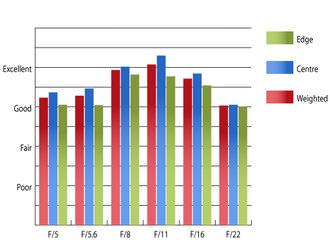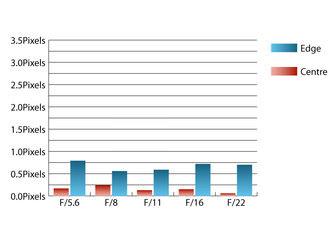Handling and features
Performance
Verdict
Specification
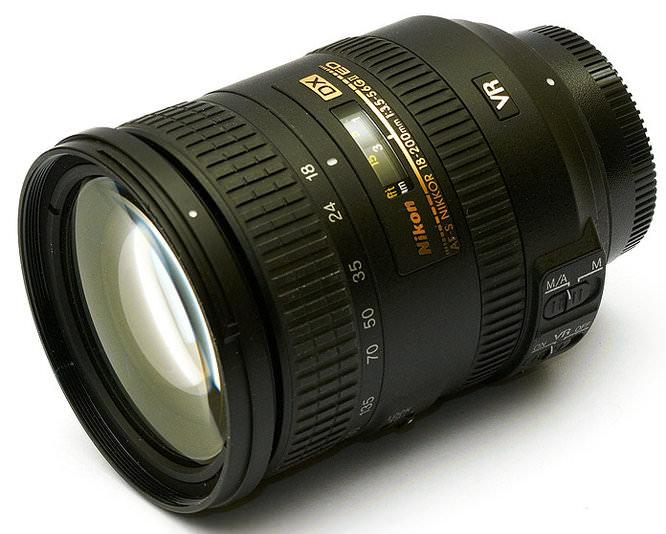
This 11.1x super-zoom lens for Nikon DX format SLRs costs around £590, sports silent internal focusing and Vibration Reduction II, which promises to allow hand-held shots to be taken at shutters speeds up to four stops slower than would be possible otherwise.
Sigma 's 18-200mm f/3.5-6.3 DC OS HSM II is similarly specified to the Nikon lens, except that it only costs around £360 and that the maximum aperture is a third of a stop slower at the telephoto end.
Tamron also offer an 18-200mm lens for only £170, but this is much more basic, with it not having optical stabilisation or silent focusing. Tamron's 18-270mm f/3.5-6.3 Di II VC PZD is a more compelling alternative as it adds an additional 70mm to the telephoto end of the zoom range, costs only £480 and sports Vibration Compensation and silent focusing.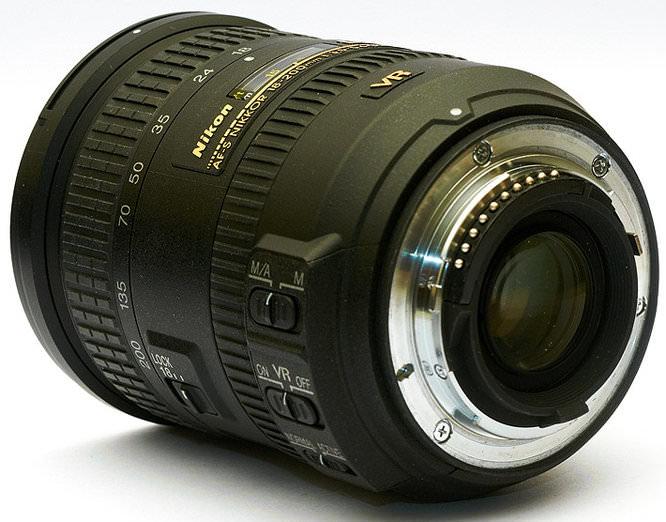
Nikon AF-S DX 18-200mm f/3.5-5.6 G ED VR Handling and features
The lens barrel is constructed from high quality plastics with a metal lens mount, similar to other consumer level lenses. It has a slightly textured finish, which doesn’t show marks easily. To address an issue found on the older Nikon 18-200mm lens, a switch to lock the lens at 18mm is provided to prevent the lens extending during transport, or when it is drawn from a camera bag. At maximum telephoto the lens is almost double its original length. The zoom mechanism extends in two sections smoothly and unfortunately creeps forward when pointed towards the ground when zoomed past 35mm, which may pose issues when used on a tripod. It balances extremely well on the Nikon D300 body used for testing and isn't a backbreaking weight at 565g.
As focusing is performed internally the 72mm filter thread does not rotate during use, making this lens ideal for use with polarising and neutral density graduated filters. Focus speeds are pretty quick for a super-zoom lens and the thin manual focus ring offers a decent amount of resistance, which makes applying fine adjustments fairly straightforward.
The minimum focus distance of 50cm allows frame filling close-ups to be taken at maximum zoom.
Nikon's Vibration Reduction II system promises to allow hand-held shots to be taken at shutter speeds up to four times slower than would be possible without the technology. So long as the system is given time to kick in properly and images are shot with care, handheld shots at 1/20sec are quite possible at 200mm, which is over four stops slower than the usual rule of thumb would normally recommend.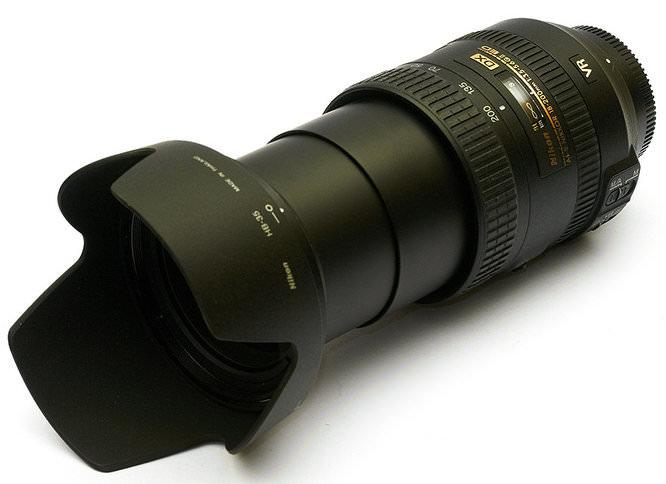
Nikon AF-S DX 18-200mm f/3.5-5.6 G ED VR Performance
At 18mm sharpness is already excellent in the centre portion of the image at maximum aperture, with good clarity towards the edges of the frame. Stopping the lens down to f/8 results in excellent clarity across the frame at this focal length.
As is the case with many super-zoom lenses, sharpness deteriorates as the lens is zoomed in for a given aperture. At 70mm sharpness is still good at maximum aperture, improving to excellent levels with the elns stopped down to f/11.
At 200mm clarity at maximum aperture is just short of good levels in the centre, with fair sharpness towards the edges of the frame. Stopping down improves sharpness in the centre to very good levels between f/8 and f/11, but the quality towards the edges still lags behind somewhat.
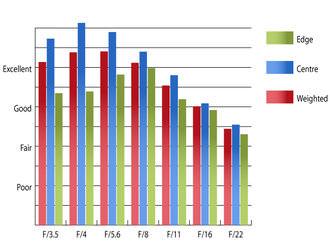
Resolution at 18mm |
Resolution at 70mm |
 Resolution at 200mm |
How to read our chartsThe blue column represents readings from the centre of the picture frame at the various apertures and the green is from the edges. Averaging them out gives the red weighted column.The scale on the left side is an indication of actual image resolution. The taller the column, the better the lens performance. Simple. For this review, the lens was tested on a Nikon D300 using Imatest. |
Chromatic aberrations are well controlled, especially for a lens covering sucha wide range of focal lengths. At their worst CA can cover an area a shade over 0.75 pixel widths, which should pose few issues.
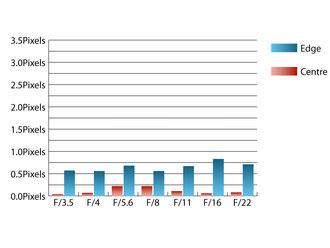 Chromatic aberration at 18mm |
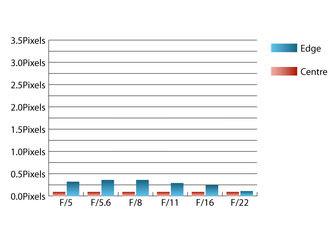 Chromatic aberration at 70mm Chromatic aberration at 70mm |
|
Chromatic aberration at 200mm |
How to read our chartsChromatic aberration is the lens' inability to focus on the sensor or film all colours of visible light at the same point. Severe chromatic aberration gives a noticeable fringing or a halo effect around sharp edges within the picture. It can be cured in software.Apochromatic lenses have special lens elements (aspheric, extra-low dispersion etc) to minimize the problem, hence they usually cost more. For this review, the lens was tested on a Nikon D300 using Imatest. |
Falloff of illumination towards the corners is well controlled. At f/3.5 and 18mm the corners are only 1/36 stops darker than the image centre and visually uniform illumination is achieved at f/5.6. At 200mm the corners are only 0.75 stops darker than the image centre at maximum aperture and visually uniform illumination is attained at f/8.
Distortion is often a weak area with super-zoom lenses. Although barrel distortion of 3.93% can be detected by Imatest at 18mm, this level is reasonable when compared to other lenses covering a similar range. Pincushion distortion levels of 1.34% at the telephoto end aren't overly disturbing either. If perfecetly straight lines are required, the distortion present should be relatively easy to correct in image editing software as the distortion pattern is uniform across the frame.
Nikon AF-S DX NIKKOR 18-200mm f/3.5-5.6 G ED VR II Sample Photos
A deep petal-shaped hood is supplied with the lens, which does a fair job of protecting the front element from extraneous light that may cause flare. Contrast holds up well for a lens of this type, even when shooting straight into the light.
Nikon AF-S DX 18-200mm f/3.5-5.6 G ED VR Verdict
The first lens covering this range from Nikon was immensely popular, and with this new version, the issue with zoom creep and the lens extending during transport has been addressed. The addition of Nikon's latest VR II vibration reduction system is also welcome, with it ironing out hand-held shakes effectively.
Compromises are always present with a lens covering such a large zoom range, and although the clarity at 200mm may not be up to that of some lenses with a shorter zoom range, it should prove plenty adequate for casual photographers who will get more out of the convenient range.
The Nikon AF-S DX 18-200mm f/3.5-5.6 G ED VR has a convenient range and is an ideal lens for the casual photographer.
